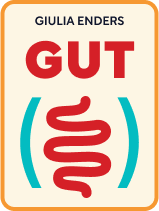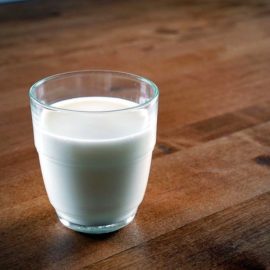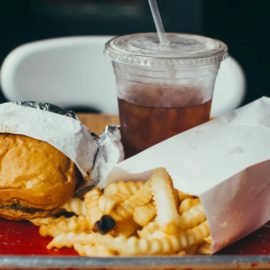

This article is an excerpt from the Shortform book guide to "Gut" by Giulia Enders. Shortform has the world's best summaries and analyses of books you should be reading.
Like this article? Sign up for a free trial here .
Where does the process of digestion begin? What are the key organs involved in the digestion of food?
We tend to think digestion happens in the abdomen, but it actually starts in the mouth. When we eat food, the mouth begins to break it down by releasing saliva and chewing. The mouth also protects us from unwelcome bacteria that we encounter in everyday life. These functions take place in two places: the salivary glands and the tonsils.
Keep reading to learn about the stages of the digestion process.
The Salivary Glands Release Saliva
Where does the process of digestion begin? Digestion begins in the mouth with the salivary glands releasing saliva. Your salivary glands are located at the top of your neck, under your cheeks. (If you run your hand beneath your jaw, they’ll feel like two small lumps.) Their job is to produce saliva, which provides several benefits:
Strengthening teeth: Enders explains that your salivary glands produce saliva by filtering blood. Because of this, it contains calcium, which strengthens your teeth. (Shortform note: Saliva also contains small amounts of fluoride and phosphate, which help build enamel and keep your teeth healthy.)
Killing bacteria: Saliva also contains mucins, which are made of an anti-bacterial substance. Mucins coat your teeth to kill off bad bacteria before they can enter the body. (Shortform note: According to one study, mucins also help you speak by keeping your mouth lubricated. Therefore, if you don’t produce enough saliva, speech can become difficult.)
Reducing pain: In 2006, researchers discovered that saliva contains small amounts of opiorphin, a naturally occurring painkiller. Our mouths are very sensitive (think about how much even a small cut on your tongue stings), and saliva’s painkilling properties keep us relatively comfortable.
(Shortform note: Studies suggest that opiorphin is more powerful than morphine and, if it were used as a pharmaceutical painkiller, would have considerably fewer side effects. A 2018 trial using opiorphin effectively reduced pain in rats. Researchers are still conducting studies to measure the effectiveness and safety of human consumption of this painkiller.)
The Tonsils Filter Out Unwelcome Invaders
Another important part of the beginning of the digestion process is the tonsils’ role. As food moves towards the back of your mouth, it encounters your tonsils. Enders claims that the tonsils’ job is to capture tiny particles that you inhale or eat and examine them. It then exposes your immune cells to these particles. According to Enders, this trains your immune system to distinguish between good and bad bacteria so that it can respond to harmful invaders in the future.
(Shortform note: Other sources question Enders’s claim that the tonsils’ only role is to train your immune system to distinguish different types of bacteria. Research suggests that the tonsils kill off bad bacteria using white blood cells. Another recent study discovered that tonsils produce T cells, which also kill bacteria and are an important part of our immune response.)
The Esophagus
The second part of the digestion process begins when we swallow food, where it enters the esophagus. The esophagus transports the food from the mouth to the stomach. Enders explains that the esophagus is ringed by muscles that propel the food downward by constricting and then relaxing. This results in a wave-like motion called “propulsive peristalsis.” This motion isn’t dependent on gravity. In other words, food makes it to your stomach even when you’re upside down!
(Shortform note: Propulsive peristalsis is one of two movements of the gut’s smooth muscle—a type of muscle that we don’t consciously control. The other motion is “segmentation contractions,” which occur primarily in the small intestine. Instead of the sequential contract-relax process of peristalsis, segmentation contractions happen intermittently, and they serve to mix up the food, not move it forward.)

———End of Preview———
Like what you just read? Read the rest of the world's best book summary and analysis of Giulia Enders's "Gut" at Shortform .
Here's what you'll find in our full Gut summary :
- How your digestive system works and why it’s important to keep it healthy
- How tiny organisms in your intestines influence your immune system (and possibly your mood)
- What your appendix actually does






